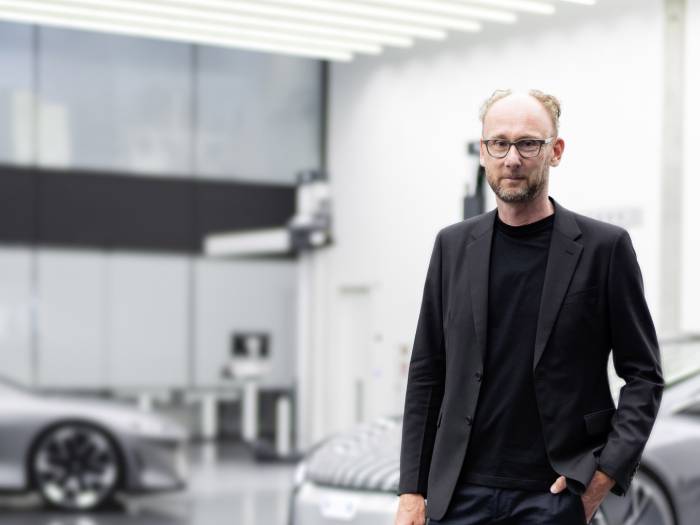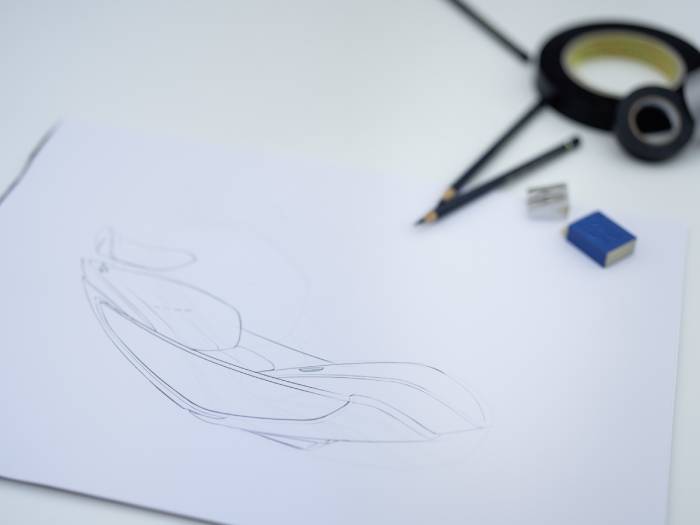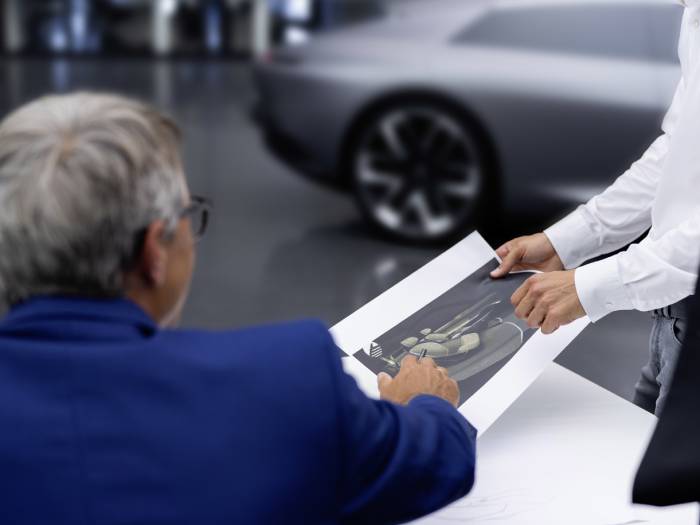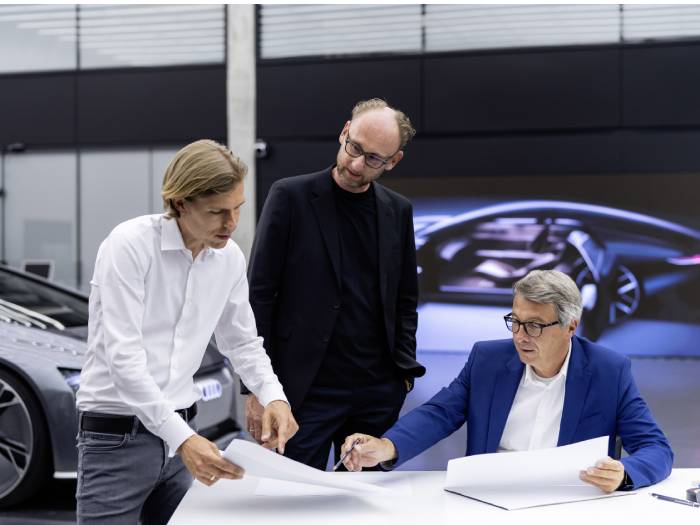An eye on the future: how e-mobility will revolutionise vehicle interior design
Electrification, digitisation and automated driving will redefine not only vehicle technology, but also design. The interior and a user experience focused on user requirements will become increasingly important.
The transition to electric mobility, the growth of digitization and expansion of technologies for automated driving are not only having a major impact on vehicles’ technical construction, but are also revolutionising their design, starting from the design process. “As a designer, there has never been a time as exciting as today. Right now is the best time to rethink and reconfigure automobile design in order to lead it into the future,” says Audi head designer Marc Lichte. Design is part of the essence of Audi’s brand, a visible symbol of “Vorsprung durch Technik”, and it allows users to make an emotional identification with the company.
From ICE to electric
In the past, it was the bulky combustion engine that determined the basic proportions of the vehicle body and consequently the aesthetic ideals. The cabin had to be as flat as possible, shaped in a wind tunnel, while the interior was designed as a functional control centre, subdivided by the centre tunnel and control elements. In addition to this, other parameters had to coexist with high levels of multifunctionality: seat comfort suitable for long-distance trips; space for passengers and for luggage.
The electric car, on the other hand, is synonymous with ample interior space, thanks to the compact motors installed on the axles and the battery in the underbody area. In the future, with the advent of autonomous driving, steering wheels and pedals may even disappear.
User-centric

User requirements are becoming increasingly important, as is connectivity inspired by smartphones, above all for younger customers. For this reason, car design is more and more becoming experience design, with the objective of creating experiences for the user. “What demands are users making of us? Do they want to be able to work in the car, read, or sleep? What purpose are we designing the car for? Long distances? Cities? Leisure? What does the interior need to look like?” are the questions Lichte asks.
In the future, the interior of an Audi will therefore be designed to reflect individual needs and will incorporate countless functions as smoothly as possible. Technologies such as voice and gesture control as well as touch-sensitive surfaces will replace traditional switch panels and rotary wheels. In any case, Audi intends to make the interiors increasingly spacious and comfortable.
The importance of interiors
In the near future, the design of the interior will set the pace for vehicle design overall. “For Audi, design is successful synthesis of architecture, design vocabulary, and materials. It is an approach which will only be reinforced in the future,” interior design head Norbert Weber tells us.
At Audi, the foundation for every design project is an upstream concept phase. The focus here is on worldwide users and their requirements. It is a matter of recognising individual needs and the corresponding requirements in order to make a seamless overall mobility experience possible. This leads to the project’s first, very target-oriented design sketches being produced as visualisations.
The design process

The starting point is usually a simple outline drawn digitally on a graphic tablet or even with pencil and paper, after which “The ideas are shared and compared within the team of designers in order to stimulate the creative process,” explains Immo Redeker, Audi Design’s head of interior architecture.
Digital tools are crucial in this technological turning point, and if the clay model above all was previously the fixed point for design and aerodynamics teams, today technologies like virtual reality are fundamentally changing the way they collaborate. The teams meet across disciplines in virtual space – regardless of where they are in the world.
Analogue and digital

Each person is equipped with VR glasses and a controller, allowing the projects to be modified in real time. During the analogue era, this process often took several weeks, while today the time savings allow every minor detail to be perfected. T
he 3-D visualisations therefore allow a very high level of precision, and improve the reliability of decisions. Interior designers in particular can realistically experience and safely assess proportions and spatial concepts with this technology right in the concept phase; the digital representations are of the highest quality and even show reflections and shading, thanks to the power of the computer clusters which provide high-resolution image content, even calculating dynamic driving scenes.
International team
The Audi Design team is international, and composed of 450 specialists from 25 nations working out of Ingolstadt, Beijing and Malibu. The work processes are integrated at the Design Centre in Ingolstadt: large-scale LED walls and modelling areas with milling machines stand right next to each other and make it possible to directly compare 3D models with reference models.
The designs and ideas compete with each other to allow the best solution to be identified, while team members change locations over the course of several months to ensure they are better networked with one another and learn from each other, while also discovering what specific needs customers have in big and important markets such as China and the US.
Global design

The digital data sets for the virtual designs from the Beijing and Malibu locations are transferred directly to the Design Centre in Ingolstadt, where they are turned into clay models at the desired scale: despite the development of digital design, a physical exhibit nonetheless remains an indispensable part of the decision-making process at Audi.
The designers can thus check the proportions from various distances in order to get a better sense of their coherence. “Nothing can replace the feeling of standing in front of a model in reality; that’s when the perspective becomes lifelike to the human eye,” Weber explains. “We want to create the best-of for Audi: autonomous driving at level four and the resulting technical possibilities also cause future possibilities for creating a prestigious silhouette from that, with perfect proportions and special aesthetics,” concludes exterior design head Philipp Römers.
Source: AUDI AG
